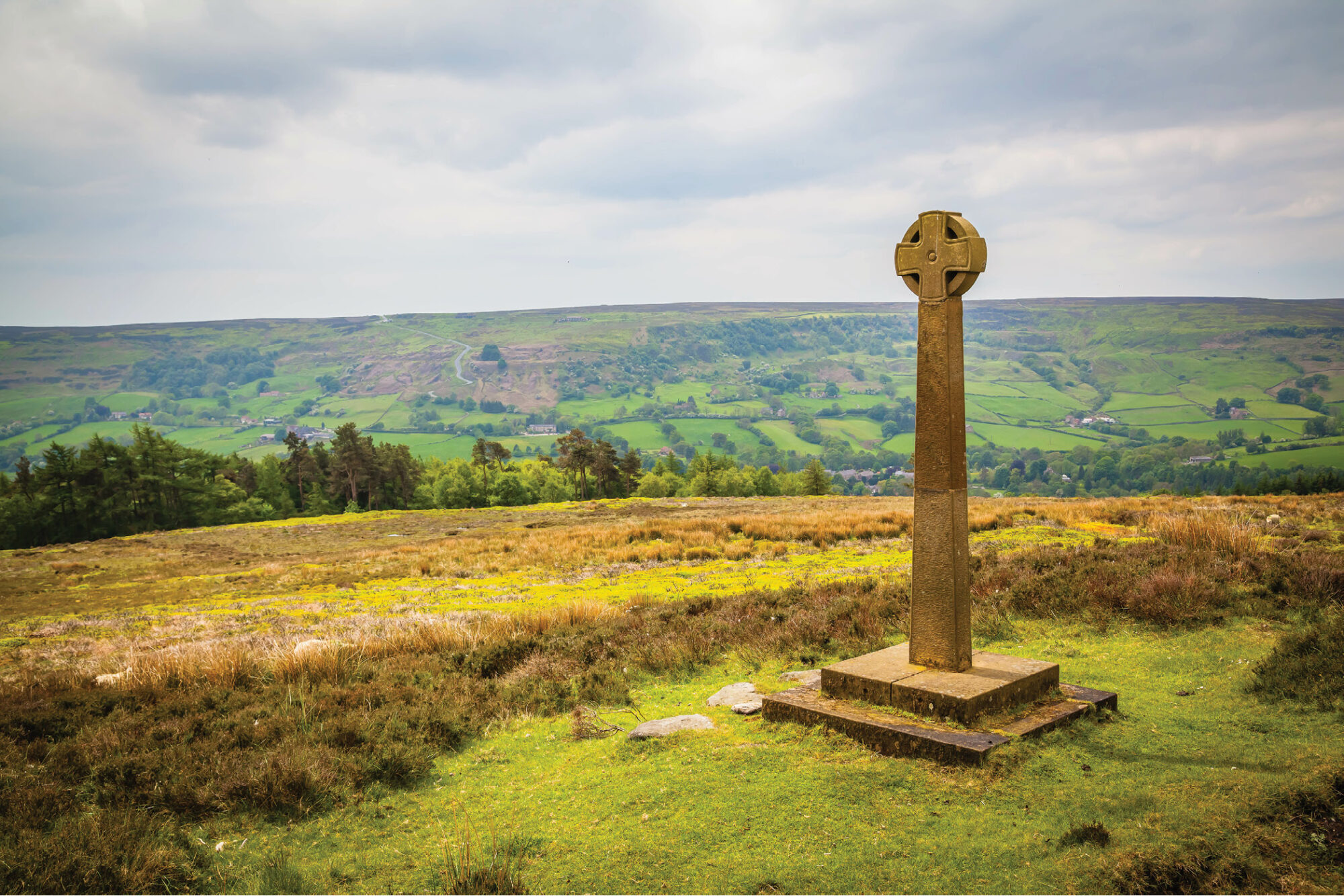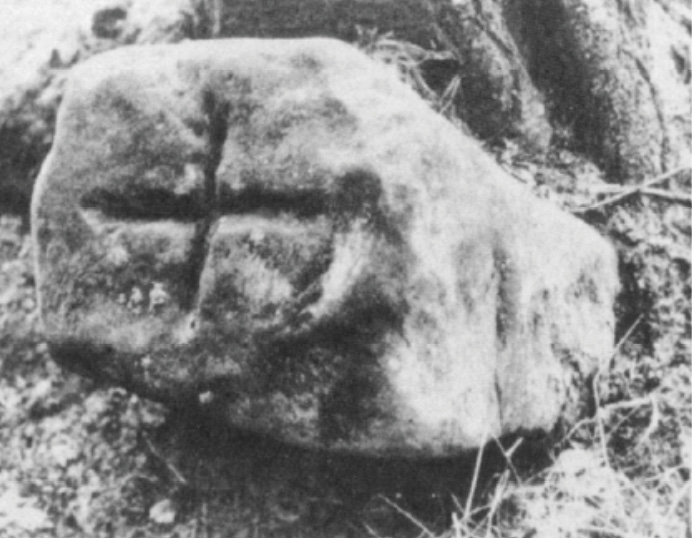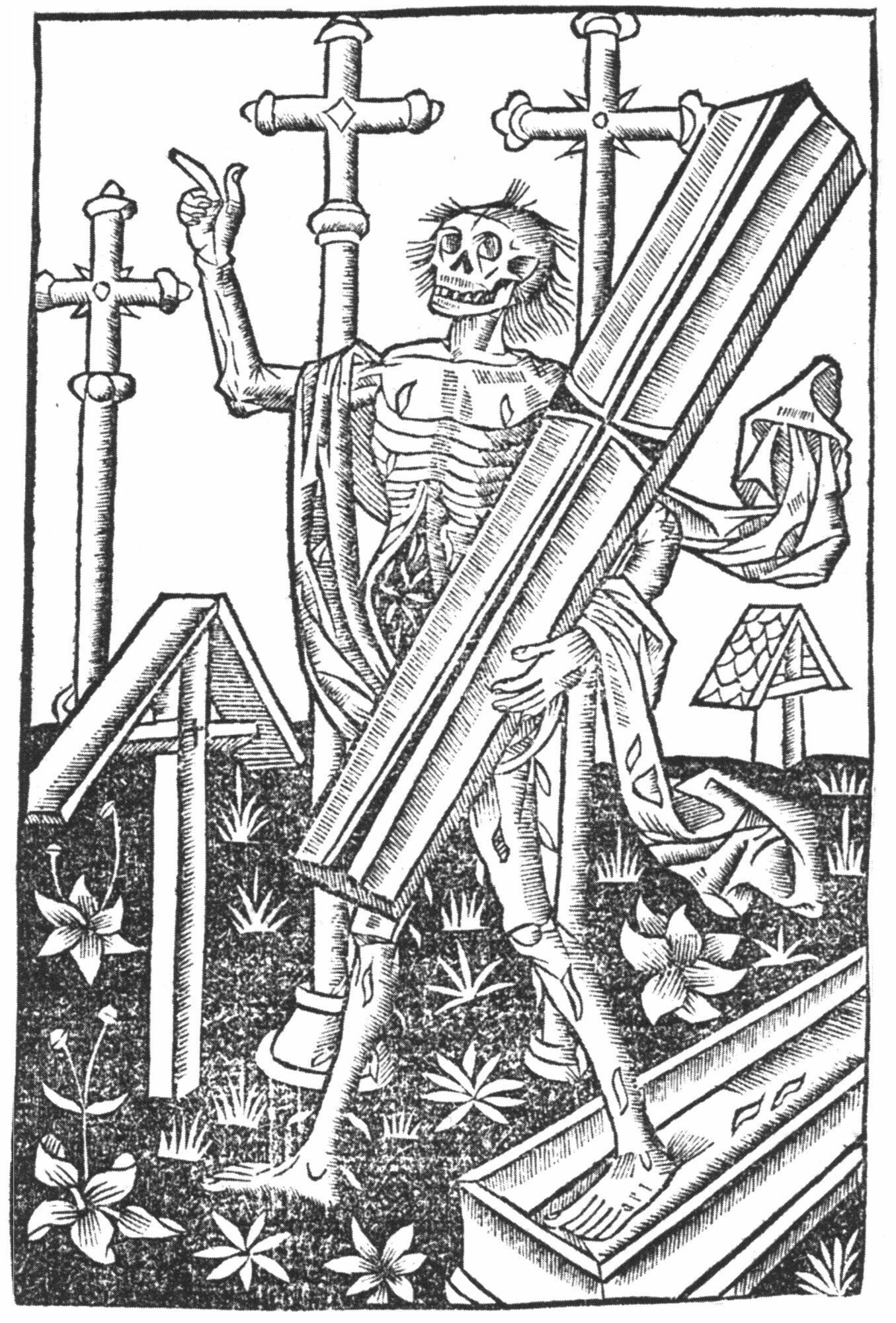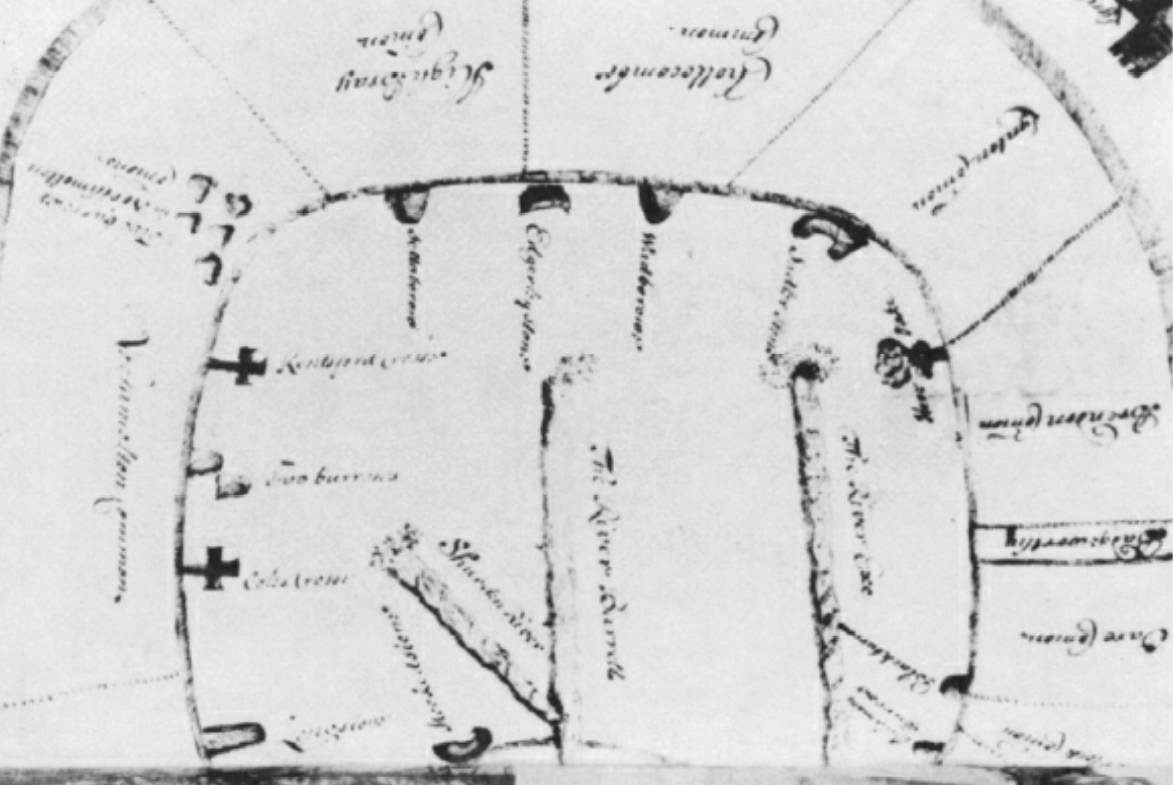Boundary lines are sacred things. History shows that boundary lines, and the surveyors who locate them, have been around since at least ancient Egyptian times. Some surveyors may know of the rope stretchers, early Egyptian surveyors who used a stretched rope covered in oils and fats to measure land, not too different from the Gunter’s chain. Some could further expand on the complex tax systems these rope stretchers helped enforce based on record boundaries and the flooding and receding Nile River. Lines critical to the livelihood of the ancient farmers who could plead before the pharaoh—thought to be a god walking among men—should their crop be destroyed by the sacred river.

An old stone cross stands on the edge of a field on the Aubrac plateau, on the way to Santiago de Compostela, Spain.
These boundary lines are also found in the Christian bible a multitude of times, Proverbs 23:10-11 states:
“10. Do not move an ancient boundary stone or encroach on the fields of the fatherless,
11. for their Defender is strong; he will take up their case against you.”
This almost sounds as though it is a warning, which should you intentionally disturb boundary stones, and in turn the lines between which they define, that some ill fate would befall the wrongdoer at the hand of a “Defender.” Certainly, the following folklore established over the next following centuries, as shall be explored in this article, suggests exactly that there is in fact supernatural punishment for disturbing boundaries. Or that, things that do disturb boundaries are inherently evil creatures. Of these evil creatures, what we would define as a vampire in today’s terms stand stark amongst the group, but land surveyors themselves, who accepted bribes soon found themselves in the legends as well. Usually cursed as spectral, penitence seeking monsters.

So, how do vampires (more commonly named “Revenant” during the medieval periods mentioned within this article, and for academic purposes shall be referred to as such) and curses relate to land surveyors? Well, in several ways, but before we jump in, we need to define two terms. Liminal spaces, and apotropaic magic.
A liminal space or liminality is a “place in between.” For example, a threshold (not outside nor inside), a property or boundary line (neither my property nor yours). Liminal spaces were painstakingly avoided in world folklore (in most popular ghost stories, monster stories, urban legends, etc. you’ll often find these spaces are often the basis for the origin of the antagonist). These spaces also extend beyond physical spaces and into the dimensions of time. Such as midnight or Halloween, for example, are liminal spaces in time.

Apotropaic magic, is a preventive magic. Many of you still do this, and simply aren’t aware of it. Knocking on wood is a popular one. When you say something with positive intent, in order to counter jinx the opposite from happening, an individual will knock on wood. This comes from Celtic origins and tree spirits. Another is the horseshoe good luck charm hung right side up over a door. Which was given to us by the lore of the devil and saint Dunstan. Another is hanging a cross or crucifix over a doorway, a liminal space.
Now, we’re getting into surveying related waters. A cross or crucifix hung over a liminal space like a doorway, is a preventative charm to keep evil from your home. Logically extend to your property line, a liminal space as discussed and now defined within this article. In fact, Brown’s book, Boundary Control and Legal Principles, says something very similar:
“For centuries, surveyors have marked boundary stones (corners) by cutting crosses into rock monuments. This practice was probably brought to America by early English surveyors, who used the same practice in their home country. An examination of early survey and mapping practices indicates that early English surveyors would cut a cross into the monument as protection or to indicate the bounds of religious holding. They then indicated these monuments on maps in the form of crosses. In all probability, these crosses were cut into stone and then shown on maps in the hopes that the Christian God would protect the boundary as Terminus protected the Greek boundary stones.” (Brown, pg. 5-6)

Surveyors make practical use of these chiseled crosses, or x’s in modern times, because it’s a very specific, retraceable, and measurable point. They were seen as practical in multiple ways at the inception in the medieval period, and their simplistic use has carried to modern times because they’re unbeatable for set points in substances that are not susceptive to setting iron rods or pipes. Returning to the topic at hand, we now have the pieces to make the revenant lore make sense.

Revenant lore is wildly vast and would take a great many volumes and articles to cover, some people dedicate their lives to studying the lore and historical implications of the creatures. So, this is a vastly trimmed and simplified edition for the sake of expressing the connection between the revenant and the land surveyor.

Example of revenant emerging from grave. Illustration from circa 1500.
In the creation of a revenant, it’s important to understand how they’re created. The concept of turning others into revenants via bite doesn’t come into folklore until long after the original revenant folklore had already been established. One of the most common ways to make a revenant by lore methodology is the nature of their death and/or burial location. If one was unbaptized or died by suicide, they were more likely to become revenants because of their unholy passing. In addition, they could not be buried in church cemetery. This is important because the concept of consecrated ground was seen as crucial to the soul’s passing and granting of eternal rest for the interned. The Grimm Brother’s, in their Deutsche Sagen collection, note the legend of a boy who rebuked God for his failure to cure the boy’s illness, and turned to the Devil for a cure. When that failed and the boy died, the parents didn’t disclose this rebuking of God to the church and tried to bury him in consecrated ground. The legend notes that the boy’s body was “expelled three times.” The consecrated ground, however, was only within the church’s defined boundary, or property line. So, the accuracy of the maps and monuments set at the corners of said property were crucial. Some of the most common places for burials then of the people who couldn’t be buried in consecrated ground were at boundaries and crossroads. The belief being that revenants were easily confused and lost, and being placed in one of these locations would trap them (another was dropping things for them to count, as revenants couldn’t help but stopping to count things. The Jiangshi from China is the prime example of this) Barber’s book on vampire lore says the following:
“Boundaries, like crossroads, became places to stay away from at night, and their associations apparently brought into being one of the odder categories of revenants: those who move boundary stones.” (Barber, 55).

If you couldn’t bury your loved one in consecrated ground, you had to look elsewhere, and one method was burying them as far from your house along your boundary. Thus, keeping an angry revenant away from your home and hoping to keep the revenant confused as to where it is. The avoidance of these locations then, is to avoid the returned monsters lingering about these liminal places. Vampires or revenants were endemic monsters, meaning, when they came back, they usually went for family first. We now know this to simply be a communicable disease and not actually reanimated corpses, but like a great deal of other things, folklore filled in the gaps that logic and science of the time left. If this boundary was protected by crossed monuments however, the revenant couldn’t cross. Meaning it would literally “push” the boundary. Moving the physical stones and the theoretical location of that boundary line.

Old map marking relgious holdings as indicated by crosses and an example of a chiseled cross in stone (above) as found in Brown’s Boundary Control and Legal Principles 7th ed.
Now, this is all very convenient from a modern audience, and you might be wondering, “what’s preventing the surveyor or property owner from moving the stones and simply blaming a deceased relative?” Well, that’s been answered in a variety of ways depending on where you were in Europe. Many authors, including the Grimm brothers in their work Deutsche Sagen, have included the curses that one can encounter by moving these sacred boundary markers.
These curses range wildly, from being something as minute as a Will-o-Wisp (an illuminated, fiery spirit believed to deceive travelers and lure them off trails, generally, they’re considered evil spirits) as the Grimm brothers report in their 1816 and 1817 works, Deutsche Sagen to becoming a hobbling monster known as a Miernik (geometrist). The Meirnik, coming from Polish bestiaries as a creature forced to carry the weight of the boundary stones it disturbed in its mortal lifetime. Now cursed in an animalistic form to wander indefinitely. However, unlike the Miernik, the Deildegast was a spirit. The Deildegast wasn’t forced to carry the monuments it disturbed, but rather the spirit must patrol and protect the boundary it disturbed. The first mention of this wandering spirit was written in the Draumkvedet (The Dream Poem). A book written in the 1840’s by Lårdal and Kviteseid, which, to the best of my research, predates the Miernik.
So, what then is the point of all this? Why bother discussing cursed creatures like revenants or the Deildegast? Certainly, the point is not cautionary, although you may take these warnings as you will, but my point is not to concern the modern surveyor of vampires and ghosts over missed calls while writing legal descriptions. Rather, the point is to draw attention to our history as land surveyors and our role in folklore and beyond over the absolute importance of boundary lines.
I believe it’s critical as surveyors we remember our long history, and the proud and honored profession this is. The earliest events referenced in this article span back some 5,500 years and our importance in society and our practices have more or less stayed the same all this time. In a time of uncertainty and struggle within our profession with growing fears of deregulation, artificial intelligence, and a mass shortage of workers, and the compounding problem of a shortage of licensed professionals within said shortage of workers, I hope this serves as a rejuvenation of pride and love for this profession. This was a fun way of showing our involvement in some of the strange, dark corners of history, and hopefully can be used as a neat way to inspire some of the younger folks in the profession to step up and fill the roles of professional land surveyors and secure their places in the history of this proud profession. After all, someone needs to be there to set the monuments and keep the revenants at bay.
Dustin Gardner is a fourth generation registered land surveyor and graduate of the University of Nebraska-Lincoln, and Idaho State University residing in Phoenix, Arizona. In his time not surveying he is a dad, historian, and folklorist.
References
Barber, Paul. Vampires, Burial, and Death: Folklore and Reality. Yale University Press, 2003.
Brown, Curtis M., et al. Brown’s Boundary Control and Legal Principles. 7TH ed., Wiley, 2014.